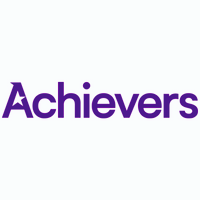Unlock a stronger workplace culture with peer recognition
In today’s workplace, peer-to-peer recognition is no longer just a nice-to-have. It’s essential. Workplaces that empower their people to recognise one another build stronger teams, cultures, and business outcomes.
Why traditional recognition isn’t enough
Formal, top-down recognition will always play a role in the workplace. It remains remarkably valuable to be recognised for a job well done from your director or CEO, but it’s no longer sufficient on its own.
CIPD’s evidence review of incentives and recognition found that employee recognition, including recognition from peers, has a large, positive impact on workplace performance. Even non-financial recognition, such as verbal praise and thank-you cards, is connected to higher intrinsic motivation and greater engagement.
Too many organisations rely on rigid systems of performance review that often miss everyday efforts, team wins, and unsung contributions. When you have to wait a year just to hear that everything is going well, you can feel unseen and underappreciated.
Organisations that make recognition part of their DNA change that pattern of disengagement. A culture where employees are trusted and encouraged to celebrate each other fosters an organic sense of belonging.
What it means to empower employees
Empowering your employees is not just giving them permission to recognise their peers' work but providing them with both encouragement and the infrastructure to do so.
The emotional and social value of peer recognition can raise retention and make employees feel more loyal to the team. In 2023, Gallup found that employees were 68% less likely to experience burnout when they received regular peer recognition at work.
Leaders have a choice to make when it comes to recognition. You can empower your employees by encouraging them and setting up the communications infrastructure they need to build recognition into their daily lives, or you can let recognition stay an afterthought. It’s up to you to shape whether peer celebration is rare or routine.
The business case for peer recognition
Engagement increases by nearly a factor of four in organisations that formalise how employees show appreciation for the work of their peers, while burnout rates are cut nearly in half.
That means better retention rates, lower recruitment costs, and attracting more skilled talent based on your culture alone. McKinsey even identified recognition as one of the most important factors in reversing productivity decline.
While leadership and management play major roles in making employees feel recognised, peer-to-peer recognition feels different. Peer-led celebration fuels connection, engagement, and loyalty. Empowering peer recognition can have an outsized impact, especially in hybrid and dispersed teams that don’t get to experience the social connections that come with proximity.
Peer recognition can likewise help overburdened management bridge the gap with younger generations. Millennial and Gen Z workers expect real-time, everyday appreciation. Nearly 50% cite lack of recognition as one of the top reasons for anxiety and stress at work. Peer recognition alleviates some of the expectations placed on leadership to fulfil high expectations from younger employees.
How to create a culture of peer celebration
The dividends from peer celebration are significant, but culture change is never easy to accomplish. Leaders need a clear blueprint to create a culture of peer celebration that will resonate with employees and get people enthusiastic about lifting each other up.
1. Make it easy and visible
Make recognition a seamless part of your employees’ days by integrating recognition and rewards into the platforms and internal channels you already use. Recognition programmes can be integrated directly into Slack, Teams, and other channels. Once the tools are in place to make recognition easy and visible, encourage shout-outs in team meetings and digital spaces where your people can shine the spotlight on their peers’ wins, big and small. Recognition can be quick, casual, and still mean the world to the recipient.
2. Set the tone from the top
Leaders have to be active participants celebrating their peers and encouraging others to do the same with consistency and authenticity. Look for those accomplishments that deserve a shout-out and carve out space to recognise exceptional work. People emulate the behaviours of their leaders. Your actions will shape the tone and tenor of recognition.
3. Recognise the recognisers
Every team has people who are naturally enthusiastic about uplifting their peers. One of the most effective ways to entrench recognition in your culture is to reward those who consistently recognise others. It reinforces the behaviour without making it seem performative or false. Leaning on those natural recognisers shows the rest of the team that praising your peers is welcome and encouraged.
4. Make it specific and sincere
Receiving praise for doing everyday parts of your job will start to feel hollowHowever, recognition for exceptional achievements will resonate. The way that praise is expressed will also influence how it's received. Train your teams on how to give meaningful recognition.Recognition should describe the action taken by a team member, the impact that their work has had on a project, and the appreciation felt for it.
5. Celebrate diverse contributions
As you roll out a rewards and recognition programme, ensure all departments, roles and personalities are included. Recognition shouldn’t favour extroverts or certain teams. It can be easy to put all of the focus on departments like sales, but IT and legal are just as worthy of recognition. Build a programme equally capable of celebrating departments that focus on back-end work and solving internal problems.
Common concerns — and how to overcome them
Not everyone is as optimistic about recognition programmes, and you may get some pushback from your team. Some common concerns you’re likely to hear include questions like “Will peer recognition feel forced?” and “What if it becomes a popularity contest?”
With the right guidance, peer recognition becomes authentic, not artificial. Recognition is most effective with gentle moderation and cultural stewardship, not rigid control.You don’t have to police how peer recognition occurs in your organisation. Lead by example and reward the behaviours you want to see.
Start small, aim big
Each time someone shares their appreciation for a peer’s work, it’s another brick laid in your culture’s foundation. Over time, everyday celebration creates an extraordinary culture of people who build each other up and celebrate each other's accomplishments.
Supplied by REBA Associate Member, Achievers
Achievers is an enterprise Recognition and Reward software with non-monetary and monetary recognition and a global reward marketplace.








